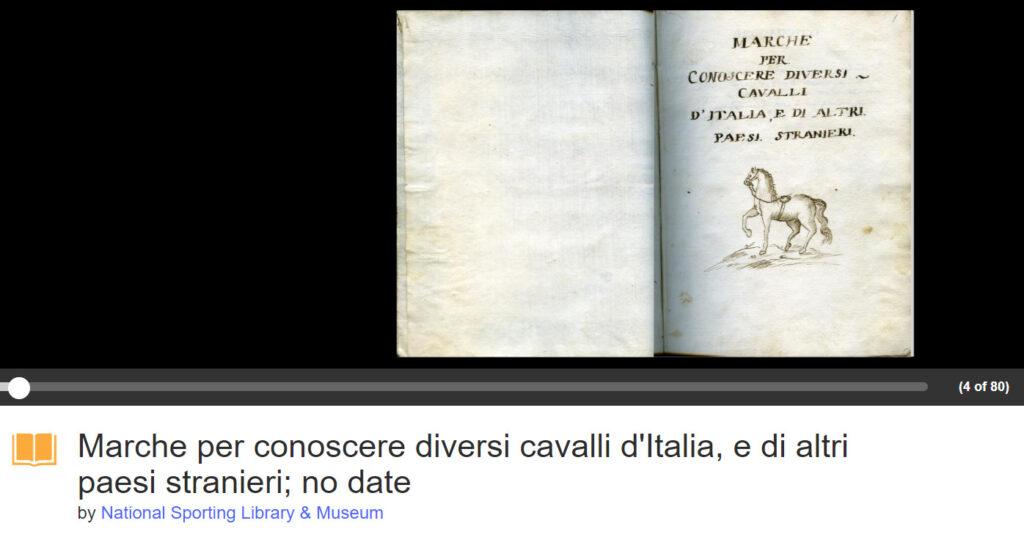
Screenshot of Internet Archive “Marche per conoscere diversi cavalli d’Italia, e di altri paesi stranieri; no date.” Italian Manuscript. National Sporting Library & Museum, in the F. Ambrose Clark Rare Book Room. https://archive.org/details/marche-per-conoscere-diversi-cavalli-ditalia/page/n3/mode/2up
I got the opportunity to digitize my first book from the rare book room at the library. I had to learn to scan on the flatbed scanner and with software. This differed from what I learned when I had a digitized project last semester. When it came to laying the book on the scanner, it could only fit one page at a time, so with the second page, I had to rotate the page upright in the software. Within the software, I could preview the scanned page to make sure that the page was straight, which sometimes took a lot of trial and error. This is also when I take the dragging tool only to get the page in the final scan. Before pressing the scan button on the final scan, I had to create a new folder for each scanned book page to live.
After I scanned the whole book, it was time to upload it to the internet archive. This is where I had to take the skills I learned from working on the Patricia MacVeagh project with how to create the metadata. Unlike the other project, in this case, I had to write the author, publisher, date, identification number, book measurements, and where the institution housed the book.
The next day, I digitized another book from the rare book room. I had to approach this particular book differently than the last book due to its miniature size. I could still apply the knowledge I gained from digitizing my first book with this book. The miniature angler book came with challenges; even though it could fit the scanner’s length, ensuring the scanned pages were straight was fine. I struggled with it getting straight for the first couple of pages, but I eventually got a system down that straightened both sides of the page. Unlike the first digitizing project, I did not have to scan each page. However, the system, internet archive, like if each page is scanned individually, so when looking at the system, it looks like a flip book. Both digitizing projects allowed me to learn different skills and apply some previous knowledge of digitizing.